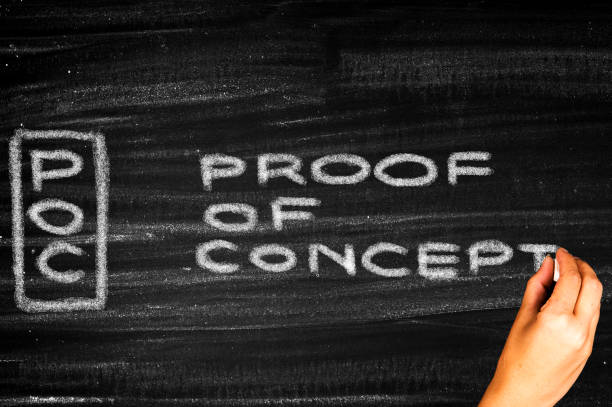Artificial Intelligence (AI) is transforming industries by providing innovative solutions that enhance efficiency, improve decision-making, and drive business growth. However, for many businesses, especially small and medium-sized enterprises (SMEs), investing in AI can seem like a daunting and costly endeavour.
If you’re considering AI for your business but worried about the costs and complexities, starting with a Minimum Viable Product (MVP) or Proof of Concept (POC) could be the answer.
In this blog post, we will explore the importance of creating an AI MVP or POC, the steps involved, and why this approach is cost-effective and crucial for validating your AI vision.
Topic Breakdown
Understanding MVP and POC in the Context of AI
Minimum Viable Product (MVP)
An MVP is the most basic version of a product that can still deliver value to users and provide feedback for future development. For AI applications, an MVP focuses on implementing the core AI functionalities with minimal features to validate the concept. For example, an MVP might involve integrating a simple chatbot on your website to gauge customer engagement and collect data on user interactions, without fully automating all customer service functions.
Proof of Concept (POC)
A POC is typically a small-scale project aimed at testing the feasibility of a concept or theory. In AI, a POC is used to determine whether the AI solution can achieve the desired outcomes and solve specific business problems. For example, a POC could be deploying a machine learning model to predict inventory needs based on historical data. This would help determine if the AI can accurately forecast future demands before a more extensive rollout.

The Benefits of Developing an AI MVP or POC
Cost-Effective Validation
Developing an AI MVP or POC allows businesses to validate their AI concepts without investing in full-scale development. This approach helps in identifying potential issues early and saves costs associated with developing features that may not be necessary.
Risk Mitigation
AI projects come with uncertainties, especially regarding data quality, model accuracy, and integration with existing systems. An MVP or POC helps identify these risks early and allows businesses to address them before committing to a larger investment.
Faster Time-to-Market
By focusing first on the core functionalities, an MVP can be developed and deployed quickly. This rapid deployment helps businesses test their AI solutions in real-world scenarios and gather valuable feedback, leading to faster iterations and improvements.
Stakeholder Buy-In
Demonstrating a working MVP or POC can help in gaining support from stakeholders, investors, and decision-makers. Seeing the AI solution in action provides tangible proof of its potential benefits and impact.
Data Insights
An AI MVP or POC provides insights into the data requirements and quality needed for the AI model. It helps in understanding the data preparation process and identifying gaps in the existing data that need to be addressed.
Steps to Develop an AI MVP or POC
1. Identify Business Problems and Objectives
The first step is to clearly define the business problems you aim to solve with AI. Identify specific objectives and outcomes you expect from the AI solution. This clarity helps in focusing the MVP or POC on the most critical aspects.
2. Gather and Prepare Data
Data is the backbone of any AI solution. Collect and prepare the data required for training and testing your AI models. Ensure the data is clean, relevant, and sufficient for building a reliable model.
3. Choose the Right AI Technology
Select the AI technology and tools that best fit your business needs. This could include machine learning algorithms, natural language processing (NLP), computer vision, or other AI techniques. The choice depends on the problem you are solving and the nature of your data.
4. Build the MVP or POC
Develop the MVP or POC focusing on the core functionalities. For an MVP, implement the minimal features required to deliver value and validate the concept. For a POC, create a prototype that tests the feasibility of the AI solution.
5. Test and Validate
Deploy the MVP or POC in a controlled environment and test its performance. Validate the results against your objectives and gather feedback from users and stakeholders. Identify areas for improvement and iterate on the solution.
6. Analyse and Learn
Analyse the performance of the MVP or POC to gain insights into its strengths and weaknesses. Learn from the feedback and data collected during the testing phase. Use these insights to refine your AI solution and plan for full-scale development if the MVP or POC proves successful.

Why Developing an AI MVP or POC is Cost-Effective
Reduced Development Costs
Developing an MVP or POC focuses on core functionalities, reducing the time and resources required for development. This lean approach helps in avoiding the costs associated with building unnecessary features and allows businesses to allocate their budget more efficiently.
Early Identification of Issues
An MVP or POC helps identify technical and operational issues early in the development process. Addressing these issues at an early stage is less costly and less time-consuming than dealing with them during full-scale development.
Efficient Resource Utilisation
By validating the AI solution early, businesses can ensure that their resources are utilized efficiently. It prevents the waste of time, money, and effort in developing solutions that may not deliver the expected results.
Flexibility and Adaptability
An MVP or POC provides flexibility to pivot or adapt the AI solution based on feedback and performance. This adaptability reduces the risk of committing to a rigid and potentially flawed development path, allowing businesses to make informed decisions.
Enhanced Stakeholder Confidence
Demonstrating a successful MVP or POC builds confidence among stakeholders and investors. It provides proof that the AI solution is viable and has the potential to deliver the desired outcomes, making it easier to secure funding and support for full-scale development.
Conclusion
Validating your AI vision with a Minimum Viable Product (MVP) or Proof of Concept (POC) is a strategic approach that offers numerous benefits. It allows businesses to test the feasibility and impact of AI solutions without committing to full-scale development. By focusing on core functionalities, an MVP or POC helps in cost-effective validation, risk mitigation, faster time-to-market, stakeholder buy-in, and gaining valuable data insights.
Developing an AI MVP or POC is a crucial step for businesses looking to leverage AI technologies. It provides a clear path to understanding the potential of AI, addressing challenges early, and ensuring that the final solution is both effective and aligned with business objectives. Embrace the MVP or POC approach to explore AI’s suitability for your business and pave the way for successful AI implementation.
Want to test your AI idea?